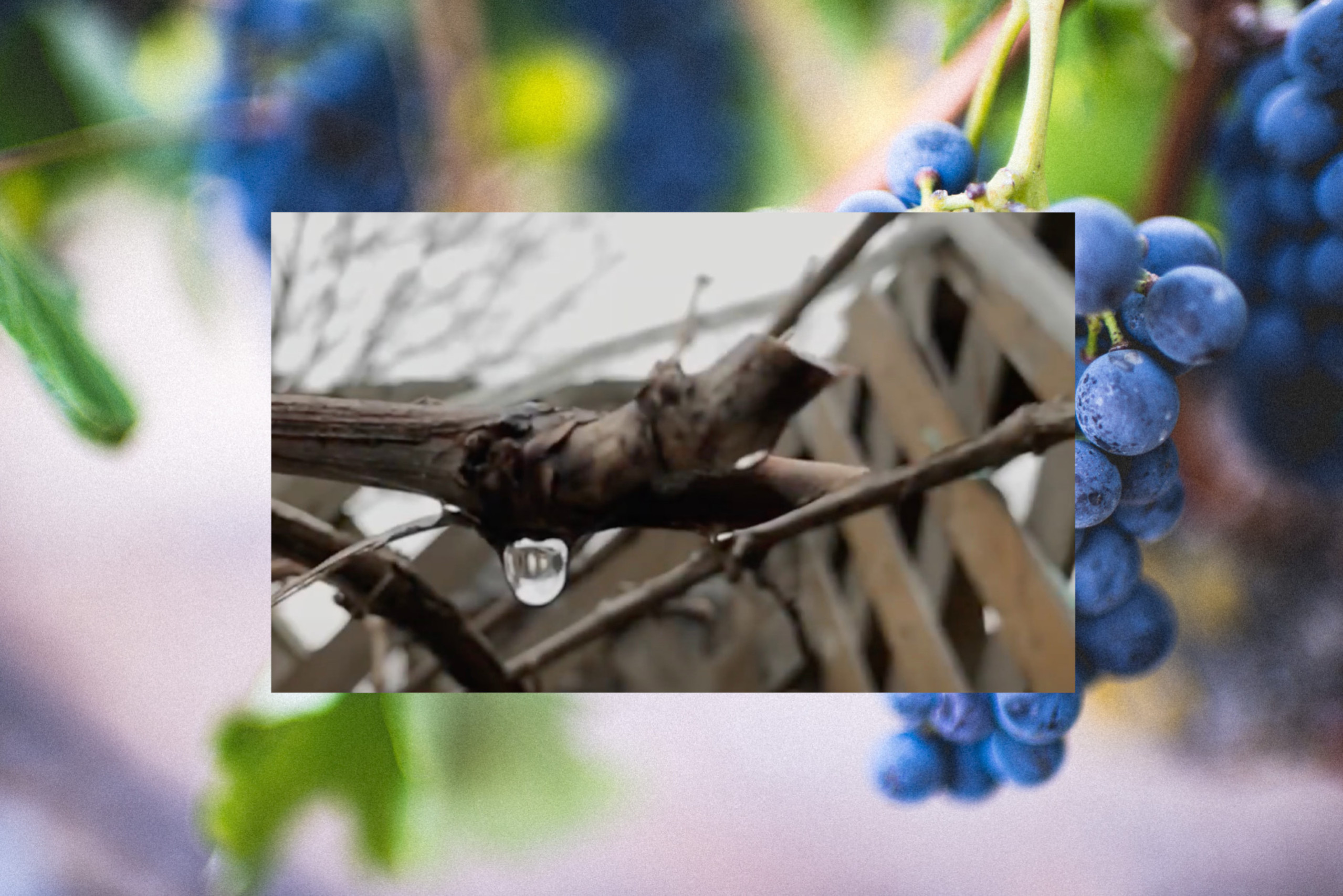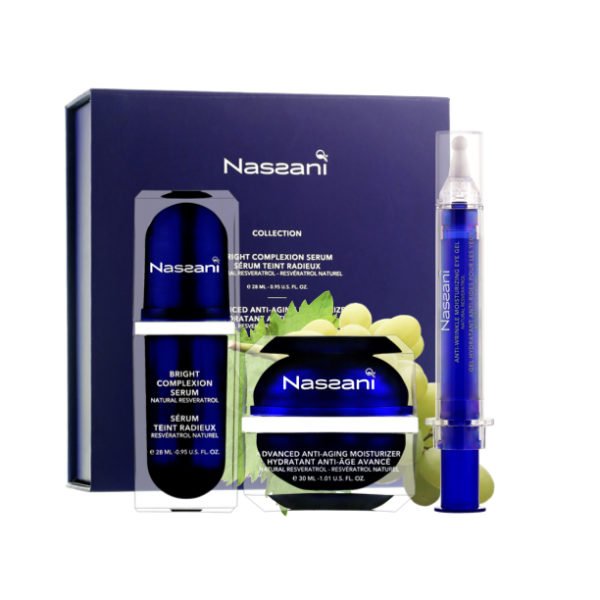What is Grapevine SAP?

NASSANI skin care and anti-aging products contain Bio-Resveratrol as a key ingredient. This is just one of the many amazing, high-quality, organic natural extracts and oils specially selected for our products. Bio-Resveratrol is one of the ingredients found in grapevine seeds, leaves, and sap. In this blog, you will discover the secret origin of this grapevine sap and how it is collected. Grapevine sap is a naturally occurring watery liquid, or droplets, dripping from freshly pruned grape vines (1) at the start of the spring season. Grapevine sap is known as grape pearls or sap balls (2), and also carry the name of Acqua Vitis or Lachryma (3).
At the beginning of the spring season, where the soil starts to warm up, grapevines begin to wake up. By the effect of osmotic pressure, moisture starts moving from the roots up the trunk to the various parts of the grapevines. Grapevine sap, of clear color, oozes from the cut stems as droplets, making it look as if the vines are crying, hence the very poetic name of tears of grapevine or bleeding grapevine. This phenomenon was believed to possess magical implications, as people would use the grape sap to cure a variety of medical conditions, ranging from skin problems, rashes, and indigestion (4).
Grapevine sap droplets can be collected by placing small amber glass bottles tied to the oozing cut stems. It can take a few days to fill up a small 500 mL bottle depending on how much sap is dripping from the grapevine stems. In order to keep the collected grapevine sap for longtime; it is recommended to carefully filter the collected sap to remove any impurities, which may fall into the container during collection. The filtered grapevine sap is then placed into amber glass bottles, firmly closed and stored in a cold place, protecting it from light and heat. In our next article we will talk about the amazing skin beauty and health advantages of grapevine sap.
—
Sources:
(1) Donald Lewis, IOWA State University, Department on Entomology
(1) Ontario Ministry of Agriculture, Food and Rural Affairs (OMAFRA) “Tender Fruit Grape Vine Newsletter for Commercial Fruit Growers” (Volume 11, Issue 5 May/June 2007)).
(3) Belgian wine, budbreak, Pietershof, spring frost, vineyard work, Voerstreek.
(4) Nature Word, September 18, 2014, Marius Lixandru.




